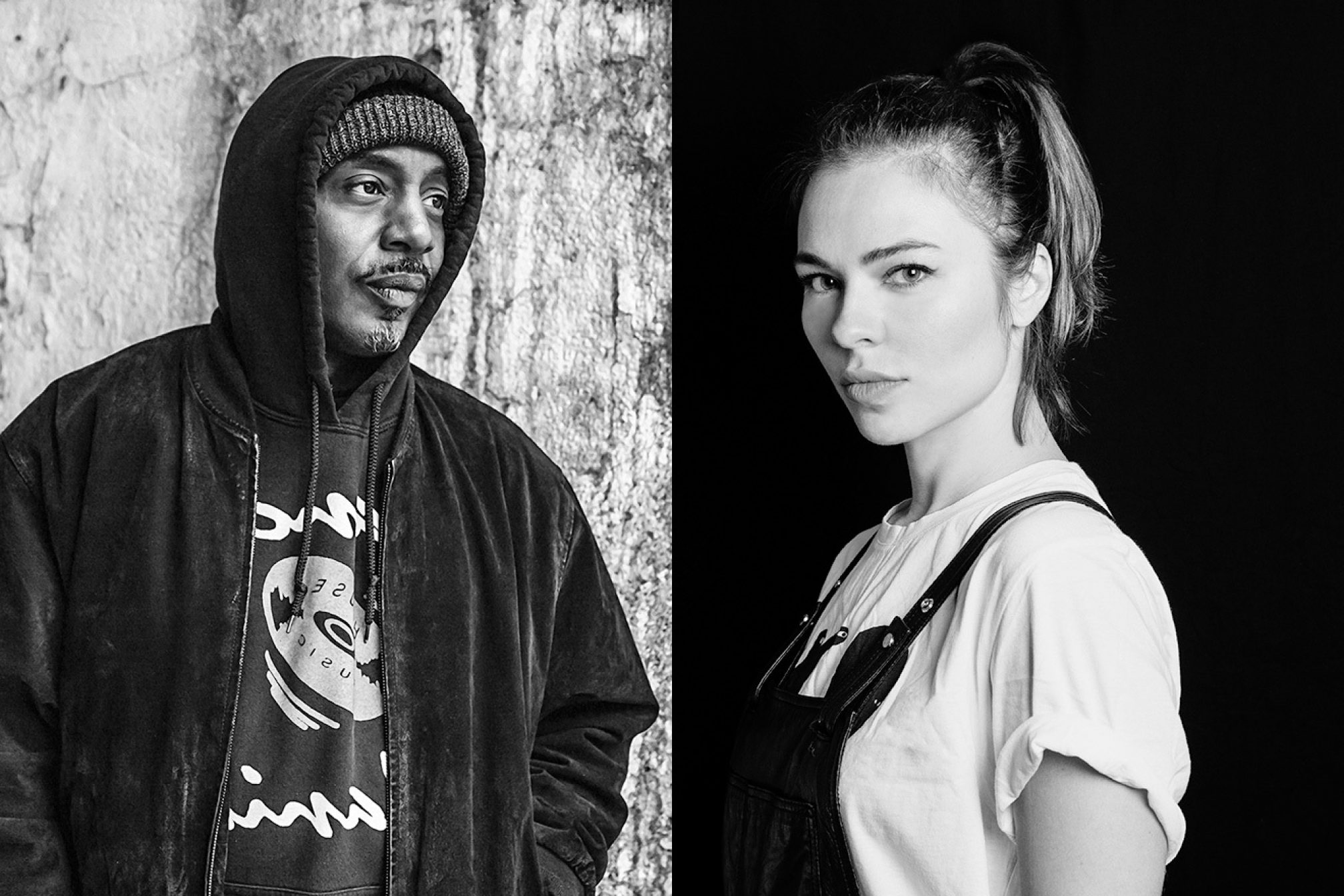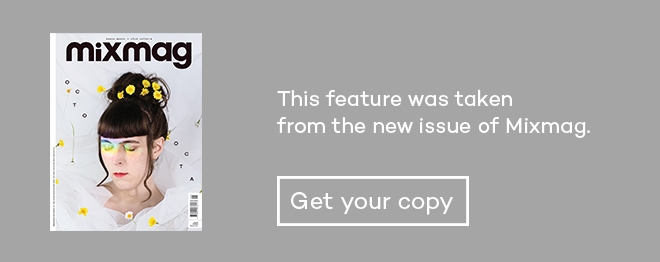 Features
Features
Nina Kraviz and Parris Mitchell talk record obessions, ghetto-house and creativity
Nina and Parris released their 'Feel My Butterfly' collaboration in June
When Nina Kraviz visited Chicago in 2013, it was a pilgrimage to the source of one of her biggest inspirations: Dance Mania. The seminal Chicago label, which re-opened that year due to popular demand from collectors and DJs worldwide, built its reputation with early hits from Hercules and Lil’ Louis, before becoming known for championing the ghetto house sound during the 90s with a series of explosive records from the likes of DJ Deeon, Paul Johnson, Robert Armani and label manager Parris Mitchell. Six years later, Nina and Parris have finally released one of the fruits of that trip: the collaboration ‘Feel My Butterfly’, out in June on Riva Starr’s Snatch! RAW imprint. We reunited the pair to talk record obsessions, ghetto-house and creativity.
Parris Mitchell: I remember back in 2013, you were doing a gig in New York and decided you were gonna stopover in Chicago and I was elated. You were really easy-going and down to earth. We didn’t know what we were gonna record, but we knew we were gonna record something then visit some record stores together and check out the warehouse where all the Dance Mania backstock was kept – the records were made in the ghetto, kept in the ghetto and we went to the ghetto to go get them!
I was surprised about how passionate you were about your art and connecting with what you believe in, picking through all those dusty records in the place they were kept – there were times I didn’t want to get my hands dirty [laughs]. When was the first time that you heard a Dance Mania record, and how did you discover the label?
Nina Kraviz: I think it was around 2002. I came to Berlin for the first time and went to the old Tresor club to catch Christian Vogel. On my way out of the club I bought a CD, Matthew Herbert’s ‘Letsallmakemistakes’. It became my favourite mix. It was kind of sloppy but in the coolest possible, Herbert-like way. It would go nicely but constantly keep you on your toes and become impossibly annoying. Out of nowhere, this one crazy track [DJ Deeon’s ‘Shake It’ remix] pops up and totally changes the whole vibe: “Shake what your momma gave ya! Shake it!”. That’s s still one of my favourite moments in the history of recorded mixes. There aren’t many that influenced me as a DJ as much as those 70 minutes. But more than anything that mix was responsible for my long-lasting love for Dance Mania.
I instantly became a fan. It was totally my vibe. Simple, at times seemingly poorly recorded, very physical music with a bad-boy feel and carelessly dropped vocals. Sometimes it was silly but it would make you drop everything, turn up the volume and say “Jaaaaam!”
I later came to Hard Wax which had the biggest back-stock of originally pressed Dance Mania records in Berlin, if not Europe. At first I bought two, then another three until I became a total addict and gained about half of the catalogue, including those numbers that were hard to find.
Sometimes I’d buy five or six copies of the same record just because it could only be played several times due to the occasionally poor quality of the recording or press. The pitch might change a few times in the same song, making it impossible to mix in the next track without making the dodgiest mix of all time. But that’s what I found so beautiful about Dance Mania – there were no labels around that would release music like that. But the unpolished, honest sound gave each record a distinct character. It almost felt like you knew the person who recorded it! I see Dance Mania as a label with a much wider musical range than ghetto-house. Would you agree with that?
PM: Definitely – Dance Mania has a very broad style. During the 90s a particular style of ghetto-house came in and that’s what the current generation is saying Dance Mania is all about. However, it’s covered a series of genres since Ray Barney started releasing records in 1986 – I did more vocal house stuff to start off with! Barney also released a compilation in 1988 [‘Dance Mania Presents Future Sounds Of Chicago’] and it had so many different styles. He even released a rap record!
NK: Were there any records released on the label that you didn’t ‘agree’ with?
PM: Everyone has different tastes; some people didn’t like the harder ghetto-house and wanted to hear something more glittery and melodic. Because I’m an artist I can appreciate a lot of different things, I look at the art rather than the commercial viability. For the most part, everything on the label has a place because everything released on the label helped it to grow. If Ray liked a record, it had its place. What’s your all-time favourite release on the label? If it’s not mine, don’t worry, I won’t be offended, we’re all family at Dance Mania!
NK: It’s impossible to select just one – it’s like asking who do you love more, Mama or Papa? I have at least 20 all-time favourite Dance Mania releases and then 50 ‘some-time’ favourite Dance Mania releases... but my favourite track of yours is ‘Follow Me Ghetto (Acid)’. What music do you think influenced the birth of ghetto-house?
PM: I would say the really raw tracks by Duane Buford, like the first record he put out on Dance Mania, the early Lil’ Louis stuff like ‘[The Original] Video Clash’ and Hercules’ ‘7 Ways’ – all of the sparse, tracky stuff that was being played in Chicago at certain clubs. In the 90s most people wanted to start doing commercial-sounding music like Black Box, but kids who went to certain clubs on the west side of Chicago just wanted to dance, they didn’t wanna hear all the keyboards, melodies and string arrangements. The rawer stuff was being reintroduced to the next generation of clubgoers who didn’t know about those early records, so when they were introduced to it 10 years later in the 90s, it became ghetto-house. Everything has a cycle! How do you feel about the up-and-coming DJs and producers’ approach to the ghetto-house genre?
NK: I don’t really know much about that, but I wish people knew more about Dance Mania. Maybe music would sound less polished, more personal and have more character. Most people are so afraid to make something that’s ‘wrong’. We are living in the time of ‘careful electronic music’. Some music is made intentionally rough and reckless but its calculated formula kills the whole ethos around it. It’s not just about how music is made but how it makes you feel as well.
A couple of years ago when I decided to play a surprise opening set at Dekmantel, I brought a bag full of really good records. Most of them were Dance Mania and Musique Records. Some of them were really wild, with shuffling sequences that were already inside the track, different volume levels and short track lengths, making it impossible to do long mixes. It was tough, but it wasn’t my first time doing it and as a long-term Dance Mania fan I was prepared for anything that could potentially occur. I enjoyed it a lot!
To my utter disbelief, the set made a lot of people really angry. They thought the BPM was changing because I didn’t know how it worked, and complained about my short or non-linear type of mixing. I was overly romantic thinking that everyone on this planet knows that ghetto-house is naturally dodgy and that occasionally sloppy mixes are a part of the concept. Long story short, I was wrong!
PM: Has the music from Dance Mania influenced your creativity in any way, and if so, how?
NK: It just felt like this was exactly how I would make music – to get the groove going, press the Record button and not touch it until the recording is finished. I recorded ‘Ghetto Kraviz’ in 20 minutes using a Mac Pro microphone and pretty much most of the music I make follows the same concept. I don’t remember how I recorded the vocals on the track back in 2013 – were you in the room or did I ask you to leave while recording?
PM: It was a nice sized studio in the FMG facility, which me and a partner opened up in 2005, and there were several rooms in it. There was a booth that you could put live musicians in, but the vocal glass hadn’t been put up yet so you didn’t have to worry about anyone staring at your face and you were able to do a performance and not feel inhibited. I’d hope the inspiration for the lyrics was me [laughs], but maybe I’m wrong!
NK: Why did you decide to release the song after so many years?
PM: I’ve been involved in a lot of different jobs in music and sometimes I get to points in my career where I want to stretch out and explore other aspects of my creativity. One day I was playing my guitar, running through my scales and doing my theory. As I was doing that, I was going through some music I had and ran across the track we recorded and I ended up listening to it. Sometimes when you give your ears a break, you get back to something and go “Wow, this is really good” – I thought maybe we should do something with it. I let my engineer [Markus Schatz] hear it; he wanted to take a stab at mixing it and it sounded great. I thought it was a shame that it wasn’t out.
‘Feel My Butterfly’ is out via Riva Starr’s Snatch! RAW imprint as part of a collaboration with Dance Mania. Listen to Nina’s classic all-vinyl Dance Mania mix here
Read this next!
Nina Kraviz is our DJ of the Year
In Session: Parris Mitchell
The Cover Mix: Nina Kraviz



